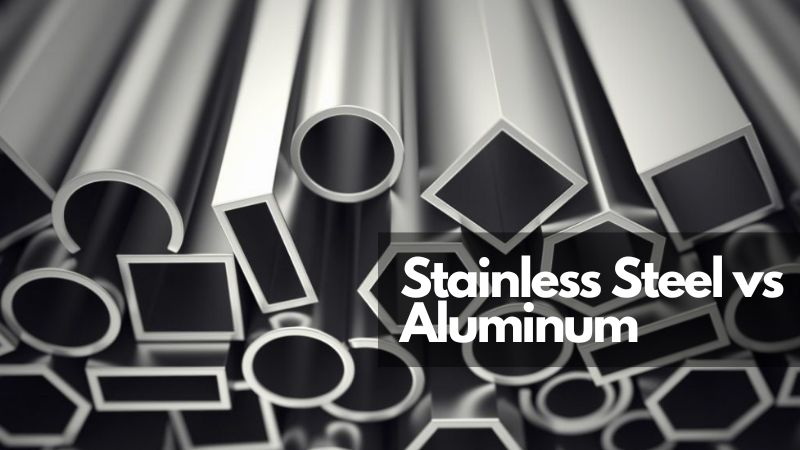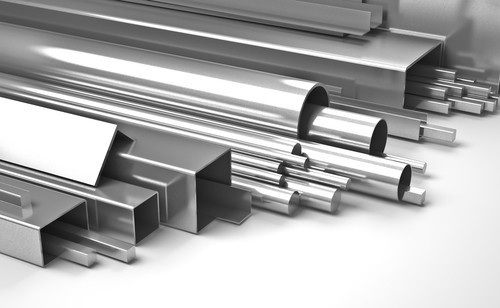English


Views: 222 Author: Tomorrow Publish Time: 2025-07-18 Origin: Site











Content Menu
● Introduction to Stainless Steel and Aluminum Fabrication
● Key Characteristics of Stainless Steel Fabrication
● Key Characteristics of Aluminum Fabrication
● Comparative Analysis: Which Fabrication is Right for Your Project?
>> When to Choose Stainless Steel Fabrication
>> When to Choose Aluminum Fabrication
● Additional Considerations: Environmental Impact and Sustainability
● Practical Examples and Industry Applications
● Summary: Making the Final Decision
● FAQ
>> 1. What are the main differences between stainless steel and aluminum in fabrication?
>> 2. Is stainless steel always better than aluminum for corrosion resistance?
>> 3. Can aluminum fabrication be used in high-temperature applications?
>> 4. Which metal is easier to weld and shape during fabrication?
>> 5. How does the cost of fabrication compare between stainless steel and aluminum?
When faced with the task of choosing the appropriate metal for fabrication, two materials typically stand out: stainless steel and aluminum. Both metals possess unique characteristics that cater to different project requirements. Understanding their strengths, limitations, and ideal applications is crucial to achieve the best outcome for your fabrication project.

Fabrication involves shaping, cutting, joining, and assembling metals to bring an engineered design to life. Stainless steel and aluminum are widely used because of their availability, mechanical properties, and adaptability in various industries. The choice between these metals hinges on factors like weight, strength, corrosion resistance, cost, and machinability.
Stainless steel is an alloy primarily made of iron, chromium, nickel, and sometimes additional elements like molybdenum or copper. It is noted for:
- Strength and Durability: Stainless steel is considerably stronger and more durable than aluminum. It can withstand heavy loads and harsh impacts without deformation. This high tensile strength makes it suitable for structural frameworks and components subjected to wear and tear.
- Superior Corrosion Resistance: Thanks to its chromium content, stainless steel naturally forms a passive layer that prevents rust and corrosion. This makes it ideal for environments exposed to moisture, chemicals, and extreme conditions. Certain grades, such as the marine-grade stainless steels, are especially resistant to saltwater corrosion.
- Heat Resistance: It maintains structural integrity at very high temperatures, more so than aluminum, making it suitable for heat-exposed applications like exhaust systems, heat exchangers, and industrial ovens.
- Hygienic Properties: Its smooth, non-porous surface is easy to clean and sterilize, which is why stainless steel is extensively used in food processing, medical instruments, and kitchenware. It inhibits bacterial growth making it a preferred choice in environments demanding high cleanliness.
- Fabrication Challenges: Machining or welding stainless steel can be difficult and costly because it requires specialized equipment and techniques. Its hardness and density mean processes like cutting or shaping are slower and demand more energy. Additionally, stainless steel's thermal conductivity is low, potentially causing welding distortions and requiring careful heat management.
Aluminum, in contrast, is a lightweight, non-ferrous metal with different qualities:
- Lightweight: Aluminum weighs about one-third as much as stainless steel, making it highly favored where weight reduction is crucial, such as in automotive and aerospace manufacturing. This facilitates easier handling and reduces transportation costs.
- Good Corrosion Resistance: While not as corrosion-resistant as stainless steel, aluminum forms a natural oxide layer that protects it from corrosion in less aggressive environments. Anodizing and coatings can enhance this resistance. Some aluminum alloys also demonstrate good performance against atmospheric corrosion.
- Excellent Thermal and Electrical Conductivity: Aluminum significantly outperforms stainless steel in conducting heat and electricity, which lends itself well to applications such as heat sinks, electrical wiring, and cooling systems.
- Ease of Fabrication: Aluminum is softer and more malleable than stainless steel, simplifying cutting, welding, and forming. It usually requires less energy and shorter processing times, which can translate to lower fabrication costs. Aluminum can also be extruded into complex shapes more easily.
- Lower Cost: Fabrication of aluminum components tends to be more cost-effective due to its machinability and lightweight nature. It also reduces shipping and handling expenses, particularly important for large or mobile structures.

| Aspect | Stainless Steel | Aluminum |
|---|---|---|
| Weight | Heavy, dense | Lightweight |
| Strength & Durability | High strength and toughness | Moderate strength, less tough |
| Corrosion Resistance | Superior, especially in harsh environments | Good in mild to moderate environments |
| Heat Resistance | Excellent, withstands high temperatures | Moderate heat resistance |
| Fabrication Difficulty | Difficult, needs specialized equipment | Easier, more malleable |
| Cost | Higher fabrication and material cost | Generally lower |
| Applications | Structural, medical, food, chemical processing | Transportation, electronics, lightweight structures |
- Projects demanding maximum strength and durability such as heavy machinery, structural frameworks, and tools. Stainless steel's superior mechanical properties make it the material of choice where safety and longevity are priorities.
- Environments with exposure to corrosive agents such as saltwater, chemicals, or extreme weather. Projects in marine, chemical plants, or outdoor infrastructures benefit from stainless steel's unyielding corrosion resistance.
- Applications where heat resistance is critical, such as exhaust parts, boilers, and heating units that require metals to maintain strength at elevated temperatures.
- Situations needing hygienic, non-porous surfaces like kitchens, hospitals, and food processing plants, where sanitary conditions are vital and bacterial contamination must be minimized.
- Projects where weight savings are important, such as aerospace panels, automotive parts, portable equipment, and lightweight frameworks. Aluminum's low density minimizes overall structure weight and improves fuel efficiency in vehicles.
- Applications requiring good thermal or electrical conductivity such as heat exchangers, electrical enclosures, and cooling systems, where aluminum's superior conduction can improve performance.
- Jobs where ease and speed of fabrication impact timelines and budgets. Aluminum's flexibility reduces manufacturing costs and time, making it desirable for prototyping and high-volume production.
- Environments with less extreme corrosive conditions or where aluminum alloys meet corrosion needs sufficiently, such as indoor architectural features, consumer electronics, or mild climates.
Both metals have different environmental footprints in terms of extraction, processing, and recyclability.
- Recyclability: Aluminum is highly recyclable and retains its properties indefinitely, often requiring just a fraction of the energy used for primary production. This advantage has made aluminum a preferred choice in eco-conscious products.
- Energy Consumption: Stainless steel production is energy-intensive, but stainless steel is also widely recycled. Both metals contribute significantly to sustainability when recycled material content is high.
- Lifecycle: Stainless steel's durability can translate to longer product life and less frequent replacement, potentially offsetting its higher initial energy cost.
- Stainless steel fabrication is commonly applied in commercial kitchens, surgical instruments, architectural panels, heavy-duty structural parts, and aggressive chemical processing environments.
- Aluminum fabrication is typical in the production of aircraft skins, vehicle chassis, bicycle frames, heat exchangers, consumer electronics casings, and lightweight outdoor furniture.
Selecting between stainless steel fabrication and aluminum fabrication is seldom a simple choice. It requires a detailed understanding of project goals, environmental factors, budget allowances, and technical capabilities. Project managers and engineers should evaluate the trade-offs of weight versus strength, corrosion resistance versus fabrication ease, initial costs versus lifecycle benefits.
By focusing on these aspects and choosing the metal best aligned with specific project needs, stakeholders can ensure a balance of performance, cost-effectiveness, and durability.
Choosing between stainless steel fabrication and aluminum fabrication depends primarily on your project's performance requirements, environmental exposure, weight considerations, and cost constraints. Each metal excels in different areas: stainless steel ensures strength, durability, and corrosion resistance in demanding settings, while aluminum offers lightness, ease of fabrication, and efficiency in less harsh environments. Analyze your project's unique needs carefully to select the right metal and fabrication approach to achieve optimal results.

Stainless steel is stronger, heavier, and more corrosion-resistant than aluminum, but harder to fabricate and costlier. Aluminum is lightweight, easier to work with, and less expensive but offers moderate strength and corrosion resistance.
No, stainless steel outperforms aluminum in aggressive and extreme environments due to its chromium content. However, aluminum with proper alloying and treatment performs well in mild to moderate corrosion settings.
Generally, aluminum has lower heat resistance than stainless steel and may not maintain structural integrity at very high temperatures. Stainless steel is better for high-heat environments.
Aluminum is easier to cut, weld, and form due to its malleability and lower density, while stainless steel requires more specialized equipment and handling.
Fabricating aluminum is usually more cost-effective because it requires less machining time and less specialized equipment. Stainless steel has higher material costs and longer fabrication times.
Welding Vs Stainless Steel Fabrication: Understanding The Manufacturing Process Differences
Stainless Steel Fabrication Vs Powder Coated Steel: Durability And Cost Comparison
CNC Machining Vs Stainless Steel Fabrication: Pros And Cons for Industrial Use
Stainless Steel Fabrication Vs Carbon Steel Fabrication: Key Differences Explained
Stainless Steel Fabrication Vs Aluminum Fabrication: Which Is Right for Your Project?
Stainless Steel Grades 201 Vs 304: Cost Vs Performance Breakdown
316L Vs 316 Stainless Steel Grades: Which Is Better for Corrosion Resistance?
Comparing Austenitic Vs Martensitic Stainless Steel Grades: What You Need To Know?
Stainless Steel 430 Vs 304: Key Differences Explained for Manufacturers
304 Vs 316 Stainless Steel Grades: Which One Suits Your Project Best?
